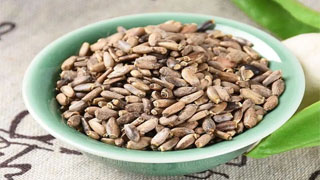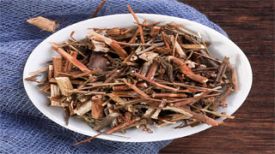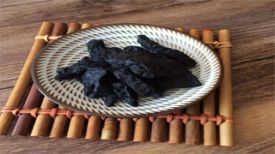
1. Aliases
Water pheasant, milk thistle, and mouse strangulation.2. Plant morphology
Herbs that grow for one or two years. The stem is upright, 30-200 centimeters tall, multi branched, smooth or covered with spider like hairs, and has longitudinal grooves. The leaves are alternate, and the base leaves are often flat on the ground, in a lotus shaped shape. They are elongated and lanceolate, with deep or shallow feather like divisions. The edge teeth have sharp spines, measuring 40-80 centimeters in length and 10-30 centimeters in width. The surface is bright green with milky white stripes, and the base is covered with a stem; The middle and upper leaves gradually shrink, while the upper leaves are lanceolate. The diameter of the head inflorescence is 3-6 centimeters, with a single branch at the top. The total bract is wide and spherical, with leathery bracts and long spines at the top; Tubular flowers are purple red, light red, or rarely white. Achenes long elliptical, dark brown or black. There are vertical stripes and white spots; The crown hair is mostly white, unequal in length, and the base is fused into a ring. The flowering period is from May to June, and the fruiting period is from June to July.
3. Origin distribution
Jiangsu, Shaanxi, Beijing and other places have introduced and cultivated varieties.
4. Harvesting and processing
Harvest the fruits in the autumn when they are ripe, sun dry them, remove impurities, and sun dry them.
5. Characteristics of medicinal herbs
This product is in the shape of a long inverted egg or oval, with a length of 5-7 millimeters and a width of 2-3 millimeters. The surface is light gray brown to black brown, smooth with fine vertical patterns. The top is blunt and slightly wide, with a circular ring and a dotted style residue in the middle. The base is slightly narrow. Hard texture. After breaking open, two pieces can be seen, light yellow white, rich in oil. Slight breath, light taste.
6. Nature, taste, and meridian tropism
Cold in nature and bitter in taste. Guigan Meridian and Gallbladder Meridian.
7. Effect and function
Clear heat and detoxify, protect the liver, promote gallbladder function, protect the brain, and resist X-rays. A heat clearing and detoxifying medicine belonging to the subcategory of heat clearing drugs.
8. Clinical applications
Internal administration: decoction, dosage 6-15 grams. Commonly used extracts as raw materials for various preparations. The whole herb is used for swelling and erysipelas; Fruits and extracts are used for liver diseases, spleen diseases, gallstones, jaundice, and chronic cough.
9. Pharmacological research
Experimental results have shown that: ① Silymarin has a significant protective effect on liver damage caused by various liver toxins. ② Silymarin, silymarin, and silymarin all have the function of stabilizing cells and intracellular biofilms, and are a class of active substances against liver viruses. In addition, silymarin has a promoting effect on bile secretion Silymarin can inhibit formaldehyde induced peritonitis and immune response induced polyarthritis in rats Intravenous injection of 30 mg/kg silymarin into dogs and rats can cause a decrease in blood pressure and a decrease in heart rate Through animal experiments, no significant toxicity of Silymarin was observed, and no side effects or toxic reactions to embryos were found.
10. Chemical composition
The whole plant contains flavonoids and fumaric acid; The seeds mainly contain flavonoid compounds, such as silybin, isosilybin, dehydrogenated silybin, silymarin, silymarin, silymarin, silymarin polymers, as well as cinnamic acid, myristic acid, palmitic acid, arachidic acid, etc.
11. Taboos for use
Not yet clear, use medication with caution.
12. Compatibility prescription
Chronic persistent hepatitis: taken with Schisandra chinensis and honey pills.
The content of the article is for clinical reference only. Non professionals in traditional Chinese medicine are not allowed to try medication.


